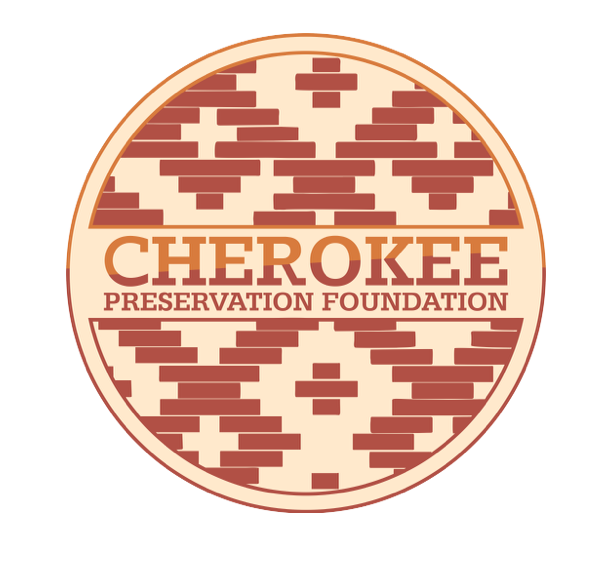Home » Cherokee Language
Cherokee Language
A video produced by NC State University in connection with its NC Language and Life Project explains why many Cherokee began to use English as their primary language and how younger members of the Eastern Band of Cherokee Indians are now learning Cherokee.
Faced with the situation of elder speakers dying far more quickly than new speakers have been emerging, the Eastern Band of Cherokee Indians is working to revitalize the Cherokee language. “Speaking a language means we have a culture,” said an elder. “There is a big difference between people who have a culture and people with a history.” Cherokee Preservation Foundation is investing significantly in the complex effort.
In 2005, with the first of many significant investments from Cherokee Preservation Foundation, the Kituwah Preservation and Education Program (KPEP) of the Eastern Band of Cherokee Indians initiated the development of a 10-year plan for the revitalization of the Cherokee language. As a starting point, the Foundation funded a survey whose results indicated that 460 fluent speakers were then living in Cherokee communities, with 72 percent of them over the age of 50 and elder speakers dying far more quickly than new speakers were emerging.The process of revitalizing the language is complex. While it has been spoken for hundreds of years, there is little in written form that can be used for instruction and few people are trained in teaching it.
In recent years, Cherokee Preservation Foundation has invested over $4.5 million in a multi-faceted effort that includes:
- The 10-year plan created by local leaders with the help of knowledgeable consultants.
- Curriculum development, teaching materials and teacher training for a total immersion program for children, beginning when they are preschoolers, that enables them to learn Cherokee as their first language. The participating children and their parents learn to speak and read together. The Tribe operates the Kituwah Academy.
- Creation of a post-secondary degree program for future certified elementary education teachers of Cherokee language at Western Carolina University.
- Scholarships for future teachers of Cherokee language.
- Community-based language programs for children and adults on the Qualla Boundary who want to learn Cherokee as a second language.
- Speaker gatherings that bring together fluent speakers so they can regularly use the language and provide stories and word lists which are shaped into curriculum material for immersion classes. The gatherings are a source of pride and fun for the elder speakers, who find a sense of community and trust in the setting.
- Language symposiums that bring together the EBCI, the Cherokee Nation in Oklahoma and the United Keetoowah Band to discuss the status of their common language.
What Has Been Accomplished
During the past ten years, much has been accomplished by the Kituwah Preservation and Education Program and Western Carolina University, along with community-based language learning offered by the Museum of the Cherokee Indian. In 2010, Cherokee Preservation Foundation commissioned a mid-plan assessment by native language experts to help identify how the Cherokee language initiative is doing and what is needed to help achieve its long-term goals.
The assessment reported solid progress in the effort to save the Cherokee language, with the authors saying:
- It is clear that the three community partners are engaged in work that comprises the core elements of language revitalization: language immersion with young children; teacher development; language material development; and adult learning. Language is viewed as critical to Cherokee tribal identity, history, culture and leadership.
- The initiative is utilizing all known best practices in Native language revitalization.
- There is a high level of commitment and determination among many key stakeholders.
- The key partners in the Cherokee language initiative are staffed by qualified, capable, committed, passionate individuals.
- A number of stakeholders believed the progress or impact of the initiative is “significant”; that there is a raising of consciousness regarding the status of the Cherokee language and the need to restore it; and that Cherokee language is heard more, seen more, appreciated more, and being used more by the younger generation—all of which are indicators of revitalization.
- A significant amount of space, technical support and equipment has been committed to the initiative.
- Integration of Cherokee language into the everyday lifestyle of the community is evident.
Challenges
The assessors also acknowledged there are significant challenges inherent to the complex task of revitalizing Cherokee language. These include the mammoth undertaking of creating learning materials for varied ages, finding and training teachers, designing programs for adult second-language learning, and identifying tools to measure fluency—all of which are being done for the first time. The assessment report contained recommendations to strengthen the shared vision and planning, as well as the capacities and coordination of those working on language revitalization.
These recommendations will help language initiative partners strengthen their work over coming years, and their efforts are vital. “Speaking a language means we have a culture,” said an elder. “There is a big difference between people who have a culture and people with a history.”
More Information
For language revitalization grant information, contact:
Programming Staff
Cherokee Preservation Foundation
(828)497.5550
Renissa Walker
Kituwah Preservation and Education Program
(828)554.6410
Dr. Hartwell Francis
Western Carolina University
(828)227.2303
Barbara Duncan
Museum of the Cherokee Indian
(828)497.3481
